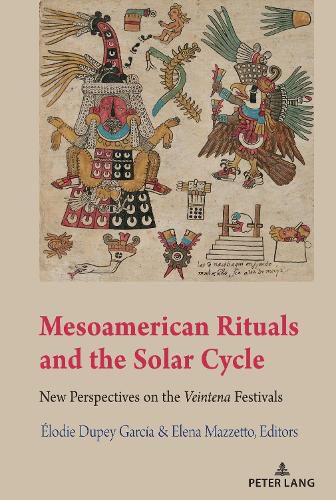Readings Newsletter
Become a Readings Member to make your shopping experience even easier.
Sign in or sign up for free!
You’re not far away from qualifying for FREE standard shipping within Australia
You’ve qualified for FREE standard shipping within Australia
The cart is loading…






This title is printed to order. This book may have been self-published. If so, we cannot guarantee the quality of the content. In the main most books will have gone through the editing process however some may not. We therefore suggest that you be aware of this before ordering this book. If in doubt check either the author or publisher’s details as we are unable to accept any returns unless they are faulty. Please contact us if you have any questions.
This book explores a seminal topic concerning the Mesoamerican past: the religious festivals that took place during the eighteen periods of twenty days, or veintenas, into which the solar year was divided. Pre-Columbian societies celebrated these festivals through complex rituals, involving the priests and gods themselves, embodied in diverse beings and artifacts. Specific sectors of society also participated in the festivals, while city inhabitants usually attended public ceremonies. As a consequence, this ritual cycle played a significant role in Mesoamerican religious life; at the same time, it informs us about social relations in pre-Columbian societies. Both religious and social aspects of the solar cycle festivals are tackled in the twelve contributions in this book, which aims to address the entire veintena sequence and as much of the territory and history of Mesoamerica as possible. Specifically, the book revisits long-standing discussions of the solar cycle festivals, but also explores these religious practices in original ways, in particular through investigating understudied rituals and offering new interpretations of rites that have previously been extensively analyzed. Other chapters consider the entire veintena sequence through the prism of specific topics, providing multiple though often complementary analyses. As a consequence, this book will attract the attention of scholars and graduate students with interests in Mesoamerica and early Latin America, as well as ethnohistory, cultural history, history of religions, art history, archaeology and anthropology.
$9.00 standard shipping within Australia
FREE standard shipping within Australia for orders over $100.00
Express & International shipping calculated at checkout
This title is printed to order. This book may have been self-published. If so, we cannot guarantee the quality of the content. In the main most books will have gone through the editing process however some may not. We therefore suggest that you be aware of this before ordering this book. If in doubt check either the author or publisher’s details as we are unable to accept any returns unless they are faulty. Please contact us if you have any questions.
This book explores a seminal topic concerning the Mesoamerican past: the religious festivals that took place during the eighteen periods of twenty days, or veintenas, into which the solar year was divided. Pre-Columbian societies celebrated these festivals through complex rituals, involving the priests and gods themselves, embodied in diverse beings and artifacts. Specific sectors of society also participated in the festivals, while city inhabitants usually attended public ceremonies. As a consequence, this ritual cycle played a significant role in Mesoamerican religious life; at the same time, it informs us about social relations in pre-Columbian societies. Both religious and social aspects of the solar cycle festivals are tackled in the twelve contributions in this book, which aims to address the entire veintena sequence and as much of the territory and history of Mesoamerica as possible. Specifically, the book revisits long-standing discussions of the solar cycle festivals, but also explores these religious practices in original ways, in particular through investigating understudied rituals and offering new interpretations of rites that have previously been extensively analyzed. Other chapters consider the entire veintena sequence through the prism of specific topics, providing multiple though often complementary analyses. As a consequence, this book will attract the attention of scholars and graduate students with interests in Mesoamerica and early Latin America, as well as ethnohistory, cultural history, history of religions, art history, archaeology and anthropology.